victorio1
Jr. Member
- Joined
- Oct 16, 2010
- Messages
- 38
- Reaction score
- 35
- Golden Thread
- 0
- Primary Interest:
- All Treasure Hunting
- #1
Thread Owner
he following is an excerpt from page 50 of The Gold House book II due to be out soon.
More information concerning the existence of gold bars inside Victorio Peak appears in a document generated by the government. According to the official “Lie Detector Examination Report” submitted by James H. McNevin on September 13, 1961. Major General W.M. Canterbury Commander at Holloman AFB had personally requested Fiege’s test. The test was authorized by the “District Commander, OSI District 17” and was “conducted from 1320 to 1435 on September 5, 1961, at Holloman AFB, New Mexico.” The 17th OSI District is situated at Kirtland Air Force Base in Albuquerque, New Mexico, the second largest base in the United States. McNevin was a “Lie Detector Examiner” from the 17th Office of Special Investigations (OSI) at Kirtland AFB. Whether or not the FBI and the Treasury Department were also involved is not known; however, it is not unlikely they were somehow involved in the planning, sanctioning and implementation of the examination.
Fiege “was informed of the nature of the offense and advised of his rights under Article 31 and acknowledged that he understood his rights.” The polygraph examination undergone by Leonard Vernon Fiege and Thomas Berlett produced the following results:
Did you find bricks in a cave in the San Andres Mountains in November? Yes.
Is your statement concerning the finding of the bricks completely true? Yes.
Did you or any of your companions bring any of the bricks out of the cave? No.
Did Berlett also see these bricks in the cave? Yes.
After an analysis of the charts pertaining to this examination, it is the opinion of the examiner that the Examinee was truthful in his answers to the above questions. —James H. McNevin
~
One question remains concerning the polygraph testing; what was the meaning of “nature of the offense” and why was it necessary to advise Fiege “of his rights under Article 31” prior to the examination? If Fiege, Berlett, and their two other friends were guilty of a crime, what was the nature of the offence? The group claimed they were hunting the day they found the cave entrance at Victorio Peak, and according to Shinkle, it was a designated hunting area. Was it a crime for them to enter the cave, or could it be they were charged with a violation of the Gold Reserve Act for possessing the gold simply by picking up some of the bars? Apparently there were charges made, but what they were is unknown. And there was yet another incident that centered on Fiege’s credibility, an event that took place at the home of Thayer Snipes in El Paso, Texas.
http://www.victoriopeak.com
cheers,
-alex
More information concerning the existence of gold bars inside Victorio Peak appears in a document generated by the government. According to the official “Lie Detector Examination Report” submitted by James H. McNevin on September 13, 1961. Major General W.M. Canterbury Commander at Holloman AFB had personally requested Fiege’s test. The test was authorized by the “District Commander, OSI District 17” and was “conducted from 1320 to 1435 on September 5, 1961, at Holloman AFB, New Mexico.” The 17th OSI District is situated at Kirtland Air Force Base in Albuquerque, New Mexico, the second largest base in the United States. McNevin was a “Lie Detector Examiner” from the 17th Office of Special Investigations (OSI) at Kirtland AFB. Whether or not the FBI and the Treasury Department were also involved is not known; however, it is not unlikely they were somehow involved in the planning, sanctioning and implementation of the examination.
Fiege “was informed of the nature of the offense and advised of his rights under Article 31 and acknowledged that he understood his rights.” The polygraph examination undergone by Leonard Vernon Fiege and Thomas Berlett produced the following results:
Did you find bricks in a cave in the San Andres Mountains in November? Yes.
Is your statement concerning the finding of the bricks completely true? Yes.
Did you or any of your companions bring any of the bricks out of the cave? No.
Did Berlett also see these bricks in the cave? Yes.
After an analysis of the charts pertaining to this examination, it is the opinion of the examiner that the Examinee was truthful in his answers to the above questions. —James H. McNevin
~
One question remains concerning the polygraph testing; what was the meaning of “nature of the offense” and why was it necessary to advise Fiege “of his rights under Article 31” prior to the examination? If Fiege, Berlett, and their two other friends were guilty of a crime, what was the nature of the offence? The group claimed they were hunting the day they found the cave entrance at Victorio Peak, and according to Shinkle, it was a designated hunting area. Was it a crime for them to enter the cave, or could it be they were charged with a violation of the Gold Reserve Act for possessing the gold simply by picking up some of the bars? Apparently there were charges made, but what they were is unknown. And there was yet another incident that centered on Fiege’s credibility, an event that took place at the home of Thayer Snipes in El Paso, Texas.
http://www.victoriopeak.com
cheers,
-alex



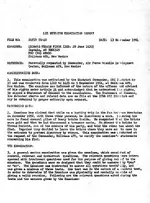
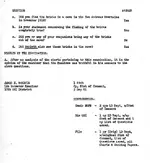
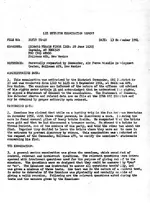
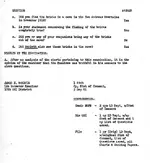
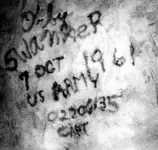
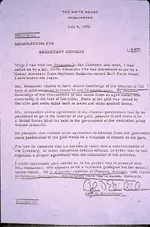




 austin should be ban for life, so the rest of us including myself can live and write in Peace.
austin should be ban for life, so the rest of us including myself can live and write in Peace. 